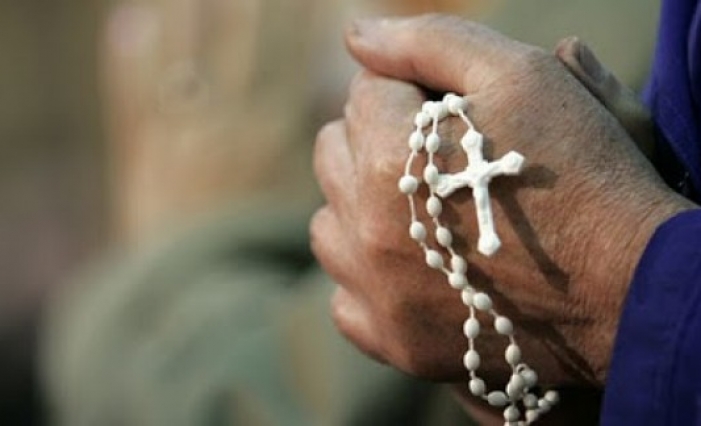The importance and preciousness of the crown of the Holy Rosary
To understand the preciousness of the crown of the Rosary it would be enough to know the very painful story of the holy martyr Father Tito Brandsma, a Dutch Carmelite friar, arrested by the Nazis and taken to the concentration camp of Dachau, where he suffered mistreatment and agony until the death of martyr (in 1942 ), later proclaimed "Blessed" by the Church as a martyr of the faith.
In the concentration camp they took everything away from him: the missal, the breviary, the crown. Left without anything, Blessed Titus could only pray, and therefore he attached himself to the uninterrupted prayer of the Holy Rosary, using his fingers to count the Hail Marys. Finally a young prisoner companion made him a crown with pieces of wood tied by thin copper wires, carving a small cross on a button of his coat, so as not to notice anything; but on that cross Blessed Titus rested his hand while praying, feeling the impression of leaning on the cross of Jesus along the exhausting journey he had to do every day to go to forced labor. Who can say how lovingly Blessed Titus used that rosary crown so rustic and so significant with those pieces of wood and copper wires? It really symbolized the painful reality of the concentration camp, but precisely for this reason it was for him the most precious jewel he had, using it with the passion of the martyr, using it as much as he could in the recitation of the numbered Rosaries.
The sister of Blessed Titus, Gastche, was able to have that martyr's crown and preserve it as a precious relic on his farm near Bolward. In that crown of the Rosary you can read all the pains and bloody sufferings, all the prayers and affections, all the acts of strength and abandonment of the holy martyr, who offered himself and immolated in the hands of the Madonna, his only comfort and support of grace.
The crown: so humble, but so big!
The preciousness of the crown is as great as the prayer that passes over those grains of coconut or wood, plastic or other material. It is on those grains that the intentions of the most ardent and passionate prayer, the most painful and painful, the most joyful and the most hopeful in divine mercy and in the joys of Heaven pass. And on those grains that pass the meditations of the most ineffable divine mysteries: the Incarnation of the Word (in the joyful mysteries), the Revelation of Jesus Master and Savior (in the luminous mysteries), the universal Redemption (in the painful mysteries), the Glorification in the Kingdom of heaven (in glorious mysteries).
The crown of the Holy Rosary is such a humble and poor object, but so great! The blessed crown is an invisible, but inexhaustible, source of grace and blessings, although it is usually worth very little, with no external sign that gratifies it as such an effective instrument of grace. It is in the style of God, moreover, to use small and inconsistent things to do great things so that one can never boast of one's own strength, as Saint Paul brightly writes: «The Lord has chosen the things that have no consistency to confuse those who believe they have it "(1 Cor 1,27:XNUMX).
In this regard, the naive, but significant, experience of the little Saint Teresa of the Child Jesus is beautiful: once she had gone to confession, as a child, and had presented her confessor of the Rosary to the confessor to be blessed. She herself says that immediately afterwards she wanted to examine well what had happened to the chaplet after the blessing of the priest, and reports that, being evening, "when I came under a lamppost I stopped and, taking the then blessed crown from my pocket, I turned it over and you turned in all directions ": she wanted to become aware of" how a blessed crown is made ", thinking that after the priest's blessing it was possible to understand the reason for the fruitfulness of graces that the crown produces with the prayer of the Rosary.
It is important that we become aware of the preciousness of this crown, holding it with care as a travel companion on this land of exile, up to the passage to the afterlife. May it always accompany us as a secret source of thanks for life and death. We do not allow anyone to take it away from us. Saint John the Baptist de la Salle, in love with the Holy Rosary, while being very rigid in terms of poverty, for his consecrated communities he wanted each religious to have a large Rosary Crown and a Crucifix in his cell, as his only "wealth" in life and in death. We also learn.
